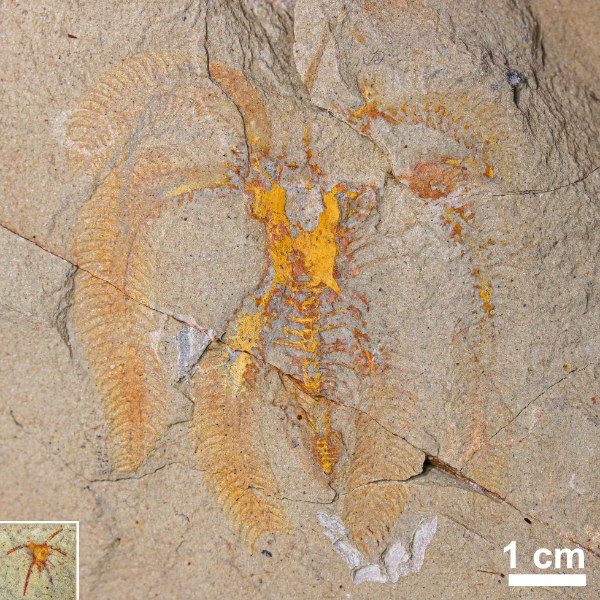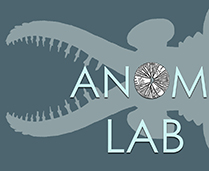Today’s arthropods often show very complex development with their juveniles and larvae living and feeding in a different way than the adults. A classical example is a flying butterfly with an edacious caterpillar or a sessile barnacle with a floating larva. But was such a complex kind of development present in the early members of Arthropoda? In a study led by former ANOM Lab member Lukas Laibl, now at the Institute of Geology of the Czech Academy of Sciences, we tackled the question by studying a few millimeters-long larvae of 480 million years old arthropod species from Morocco belonging to an extinct group called marrellids, which thrived in early Paleozoic seas. The results are presented in a paper published today in Frontiers in Ecology and Evolution.

To better understand the anatomy of this Paleozoic animal, we imaged the tiniest larvae using synchrotron computed tomography (CT) scanning at the Paul Scherrer Institut in Switzerland. Thanks to the high-resolution data obtained and meticulous segmentation, we have been able to virtually extract and render in three dimensions a tiny, about 2 mm long, specimen on a micrometer scale, allowing us to recognize morphological details, from tiny claws to delicate hairs on the animal legs.
Detailed examination of the appendages of this early arthropod larvae tells a lot about its mode of life. On the head, it had sensory antennae, a pair of robust legs used to orientate its body or to anchor itself on the sediment, and a pair of walking limbs. Two additional pairs of legs on the trunk were also used for walking, while the rear limbs of the trunk bore spines and delicate hairs and were used for capturing small organic particles that the animal was eating. All trunk limbs also had a gill branch used for respiration.
Interestingly the adult stages of various marrellids seem to have a very similar mode of life as these tiny babies, contrary to what is seen in many recent arthropods. We also show that the tiny larvae even lived in the same locations and environment as the adults of the same species, on the seafloor at the margin of an ancient continent called Gondwana, just below the storm wave base.
Marrellids are considered to be very early arthropods, showing many ancestral features. We therefore think that such development, with no major change in feeding and ecology between larvae and adults, was ancestral for arthropods as a whole. Other ancient arthropod groups present a similar development, thus supporting our conclusions. This indicates that complex life cycles must have evolved independently later in several arthropod groups.
Reference: Laibl L., Gueriau P., Saleh F, Pérez-Peris F., Lustri L., Drage H.B., Bath Enright O.G., Potin G. & Daley A.C. 2023. Early developmental stages of a Lower Ordovician marrellid from Morocco suggest simple ontogenetic niche differentiation in early euarthropods. Frontiers in Ecology and Evolution 11, 1232612. Find the article (Open Access) here
